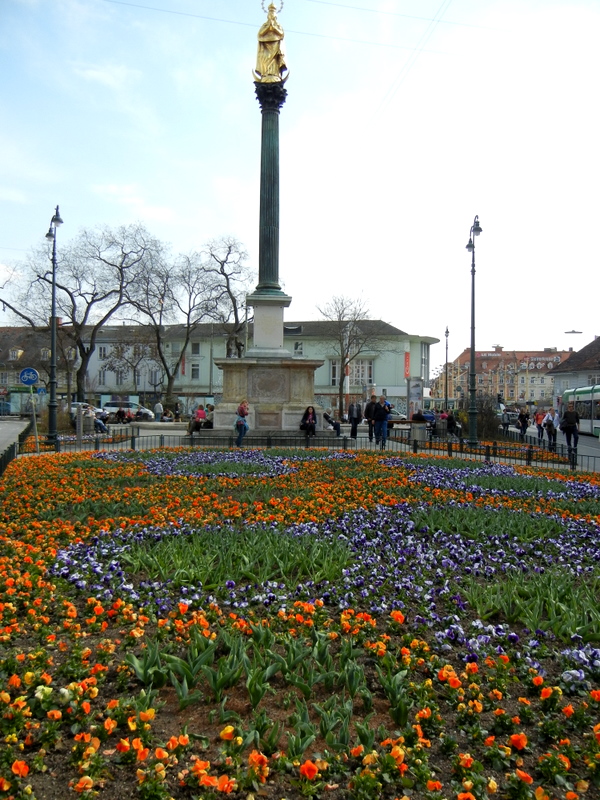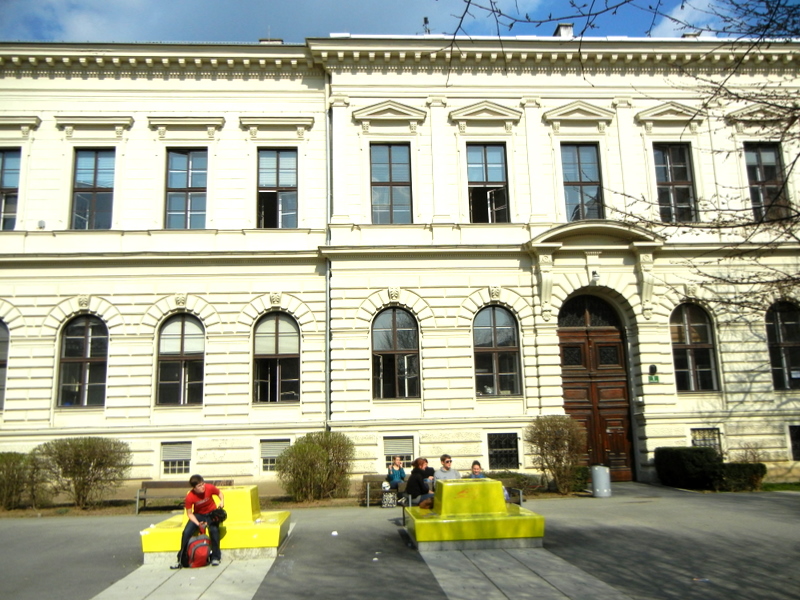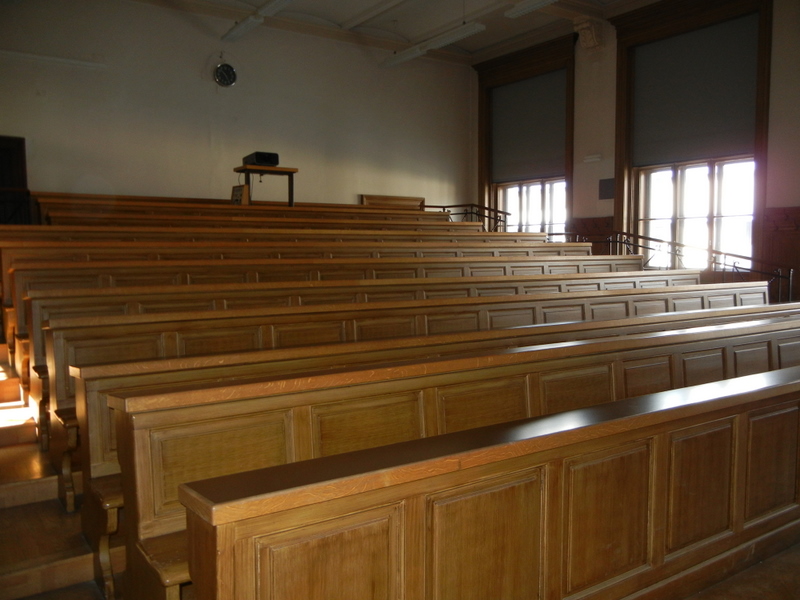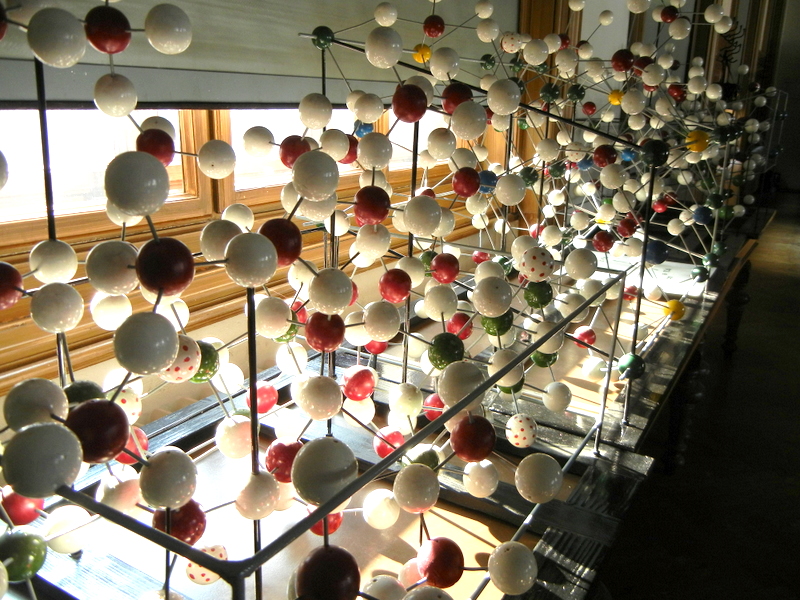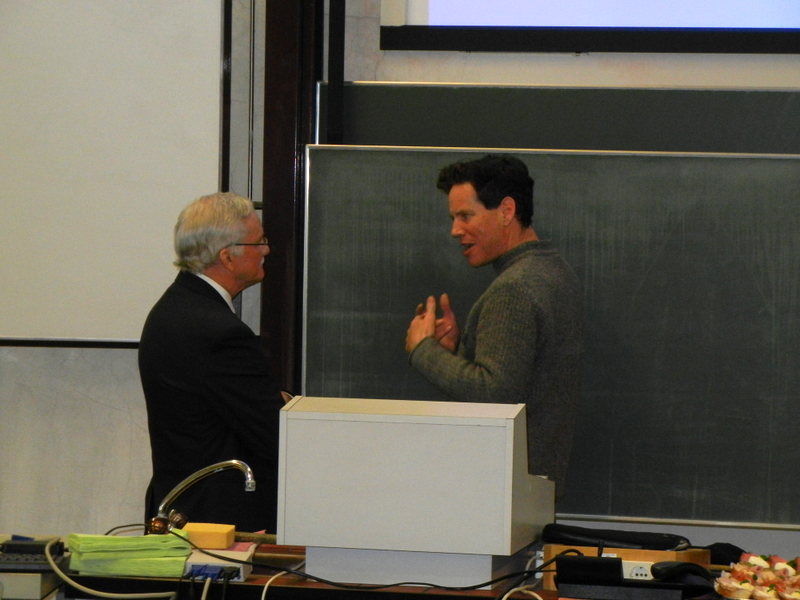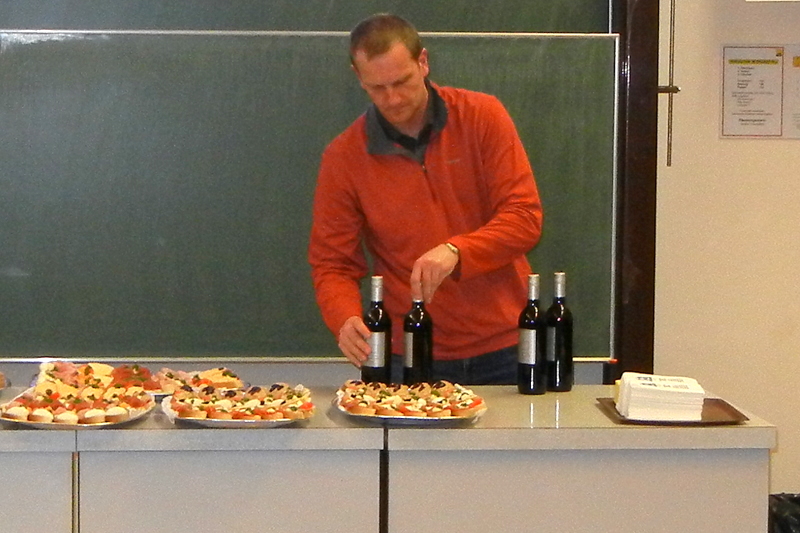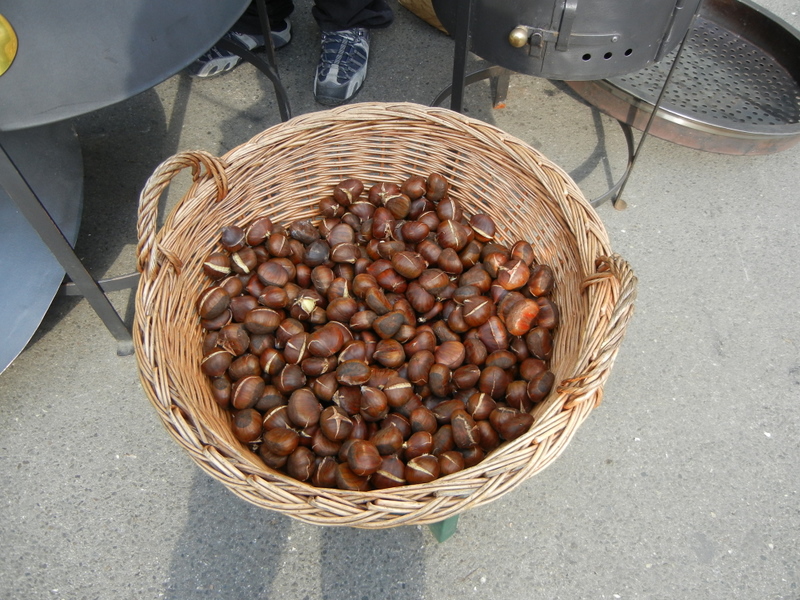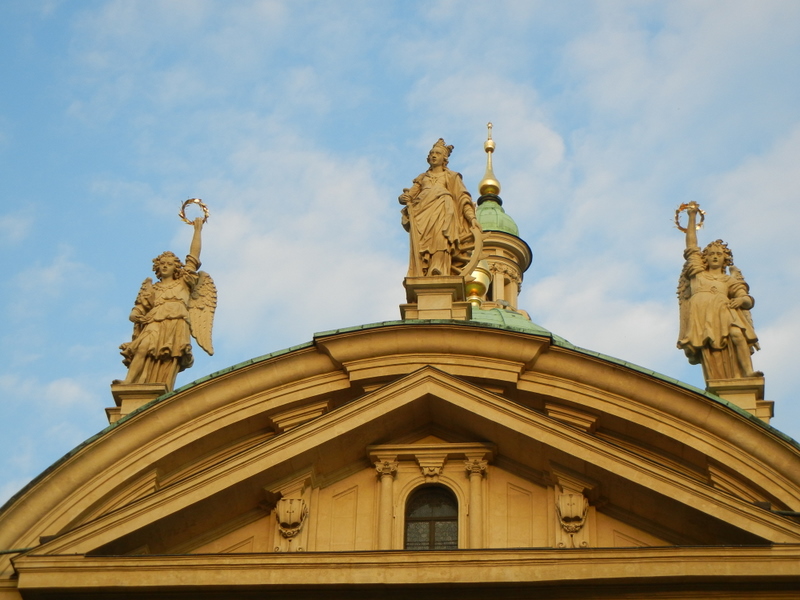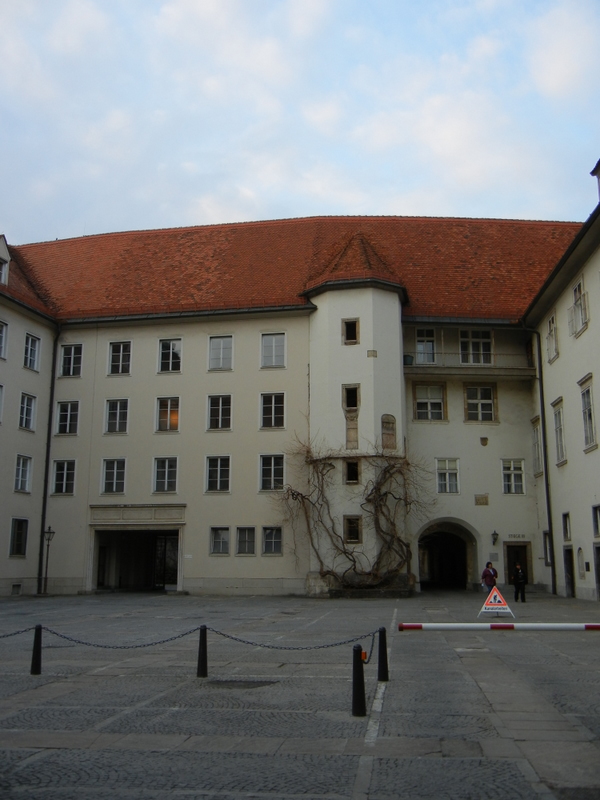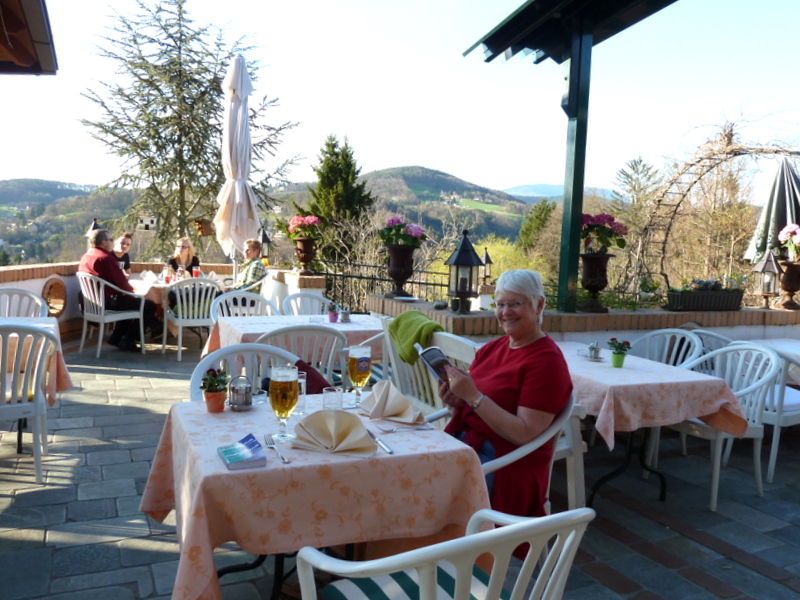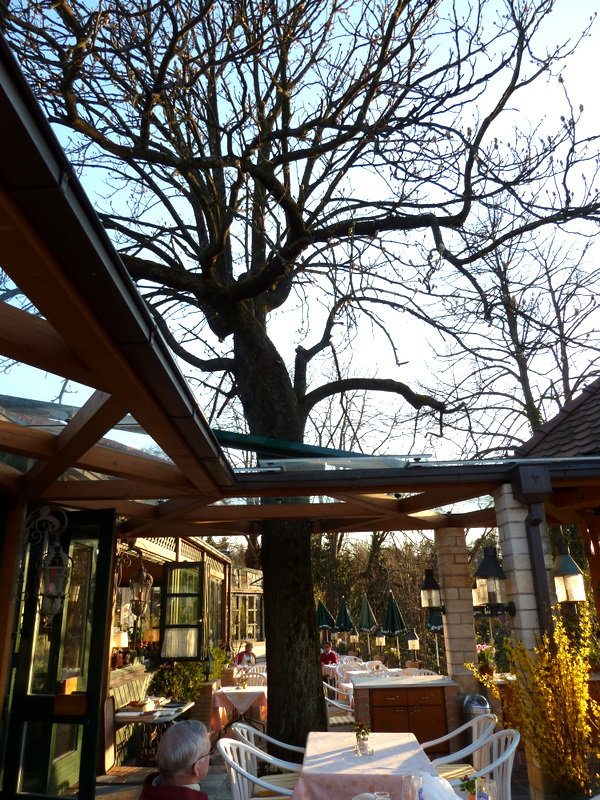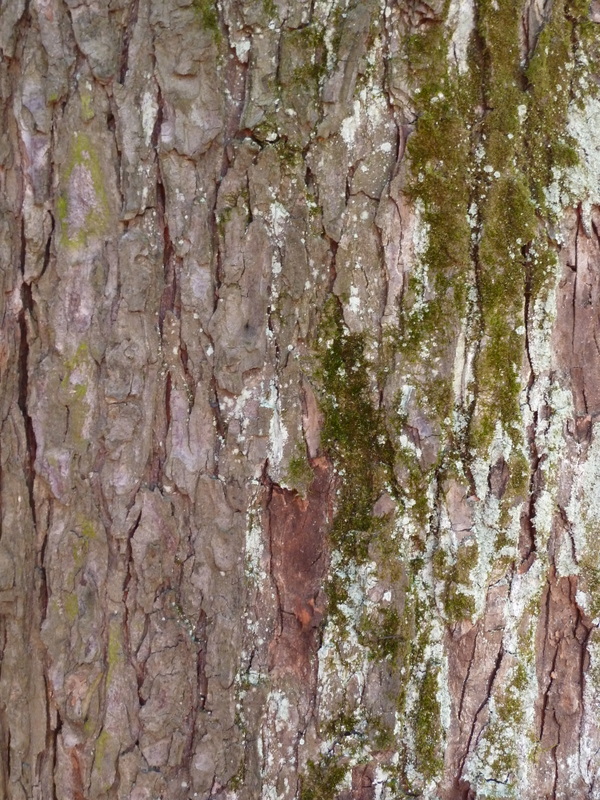Spring is in full swing here in Graz. The woodland flowers are blooming all around us; in the major plazas, tulips and crocus and other bulb-driven plants are appearing as if overnight (actually, they are –planted by gardening crews each spring, not springing forth from their winter sleep!); daffodils adorn private yards and maybe best of all, forsythia is turning on the lights in a significant show of flaming yellow! I love forsythia – it was my Mom’s favorite spring flower and we had a wild and crazy plant out in our front yard when I was growing up in Virginia.
I am watching the forsythia in our front yard here in Graz – it’s a little ‘behind’ because it’s higher up, I guess, and I will post a photo when it’s ‘ready’. Meanwhile, this is what Jakominiplatz in central Graz looks like now:
Last week was a quiet week – no major concerts or events, except for Bill’s talk in the Seminar Series his department at KFU/TU sponsors. It was one of the first really warm spring abends (the late afternoon time) and students were enjoying the out of doors, a sight you would see on any university campus!
The talk went great, held in an old lecture hall in one of the buildings at KFU. With each footfall on the worn marble steps I wondered about the history of the hall and of the students and faculty who walked here so long ago. The university itself dates back to 1585, founded by Archduke Karl II of Inner Austria. After some permutations, (including a stint as a lycee and a medical school) it was reopened in 1827 by Emperor Franz I. The main (old) buildings that exist on campus today were inaugurated in 1895. Bill’s office is NOT in one of the old buildings.
The University hit a low point in 1938, when 17 percent of the teachers, the Nobel Prize winners Otto Loewi, Viktor Hess and Erwin Schrödinger among them, as well as almost two thirds of the students were ousted and expelled for “racist”, religious or political reasons. Nearly 27,000 students are enrolled today.
The talk went well, attended by about 60 people – students, faculty, the deans of the two programs that are jointly sponsoring this Fulbright appointment. The hall itself was old also: long wooden benches arranged in rows, with a place to write in front. Everything wooden! If not, how else would (no pun intended) we be able to knock on the ‘desk’ tops when the lecture was over? (No applause in Austrian classrooms; if the students liked the lecture or class, they knock on the table or desk tops as a sign of their respect!)
I certainly knew I was in a science classroom, though!
Bill has some great colleagues here. One of them is originally from California and is married to an Austrian woman.
After the talk, there were lovely refreshments! Out came a huge variety of Brötchen (a slice of bread topped with cheese, egg, different cuts of meat including sliced blood sausage, salami, fish, vegetables), local wines from east of Graz (white from just east and red from Burgenland, which borders Hungary), several kinds of beer, and juices to be mixed with water (your choice of stille or mit gas). It was a great opportunity to meet some of the faculty, and some of the spouses as well.
Graz is a lovely place to walk and we spent an evening last week, just walking around downtown, after bopping into Moser Buchhandlung to purchase, believe it or not, a Spanish-English dictionary. There were choices in nearly every major language of the world, and only ONE Sp-En dictionary. We got the last one! As we walked we noticed that now all the restaurants and cafes have their platztischen (plaza tables) out, and the strolling musicians are there to accompany diners.
We passed the maroni stand, (John, this one is for you!)
and the Dom, where the sun was glinting off the angel’s ‘crown’,
and in one of the many courtyards, found the center for the Styrian government (Graz being the seat of Steinmark or Styria).
Outside, in a tree, another sure sing of spring!
The weather was so warm on Saturday that we made for our favorite local restaurant Hausrl im Wald, aiming for dinner on the patio.
This is a chestnut tree, but we think its a HORSE chestnut and not a true chestnut from which the maroni come. Its buds signal flowers appearing soon and the arrangement of the branches looks very much like the horse chestnut in our neighbor’s yard at home.
We inhaled enjoyed our dinner, mostly because we had not eaten since 7:00 AM due to an unexpected trip out of town!
More on that to come!
Thanks for reading!

